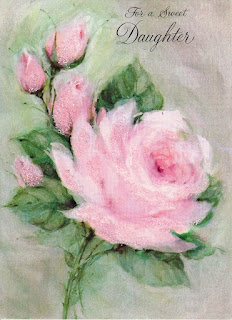NEARA recently acquired a new collection of letters, postcards, and personal papers belonging to Agnes Johnson (1903-2001) of Piggott, Arkansas. The collection was formally donated by Agnes’s great-granddaughter, Bess Wilhelms, but it was her grandchildren Allen Waldo and Lisa Waldo Wilhelms, who preserved it after Agnes’s death in 2001.
Agnes was born in November 1903 in Stoddard County near Bloomfield, Missouri, to Dr. John Bess and his wife Josie Lettie Bess. The Bess family moved to Piggott in 1918, when Agnes was 15 years old and her father set up a veterinary practice in town. Agnes lived in Piggott for over seventy years, where she went to school, got married and raised a daughter. It was in Piggott that Agnes wrote and received the letters and postcards, now in the collections of the Northeast Arkansas State Archives. She addressed most of them to her only child, Carolyn Bess Waldo and, later, to her grandchildren Allen and Lisa Waldo of Missouri, as well as to her siblings. In them she touched on daily life in Piggott and the love she had for her family.
In 1924, at the age of 21, Agnes married Louis Johnson of Piggott; the couple celebrated their 50th wedding anniversary in 1974. According to granddaughter Lisa Wilhelms, Agnes grew up on a dirt road across the street from Louis, “who eventually would become the love of her life.” Agnes often told her family the story of how she and Louis “used to throw a ball across the road and play catch with each other as children.” “Papaw,” according to Allen Waldo, “was a bricklayer and … [h]e was involved in many of the brick buildings in and around Piggott.”
Agnes was gainfully employed
outside the home for most of her adult life, too. For over forty years, she worked
in three historically significant department stores in Piggott: Tucker's Grand
Leader, Wall’s Department Store, and Janes’ Department Store. Some of Agnes’s
letters contain small samples of fabric, likely from textiles sold in these
stores, which she showed to her family members in case they wanted a dress or a
quit made from it. According to Lisa’s memories, “she loved working with people
and doing for others,” so her department-store career fit well with her
personality.
Lisa inherited and preserved many of the quilts her grandmother Agnes made. When Bess Wilhelms – Lisa’s daughter – first contacted NEARA about donating her great-grandmother’s correspondence, she also asked if we might be interested in her impressive collection of quits. NEARA is primarily an archive but we put Ms. Wilhelms in touch with a sister agency, the Historic Arkansas Museum in Little Rock. Currently, Lisa Waldo Wilhelms, her brother Allen, and her daughter Bess are in contact with museum staff about donating some of Agnes’s quilt work.
Agnes retired in 1969. It was in her retirement years that her letter-writing burgeoned. Granddaughter Lisa remembers:
She
was devoted to her husband and loved her family, as you can tell from the
number of letters included in the collection. I remember her sitting at her
desk sometimes in the evening writing letters to relatives. When my mother
[Carolyn] … moved “far away” to St. Louis, I think, the letters between them were
even more important to her [Agnes], given the high cost of a long-distance
telephone call.
For nearly five decades, Agnes
sent and received hundreds of letters and postcards. Many of them are now part
of the Agnes Johnson Papers, preserved at NEARA. A finding aid for the collection
will be available on the Arkansas State Archives’ website in the near future.
